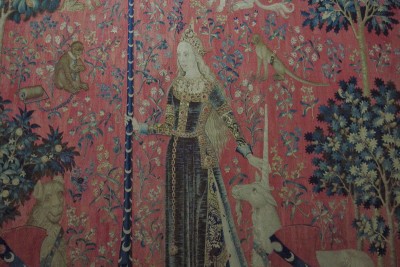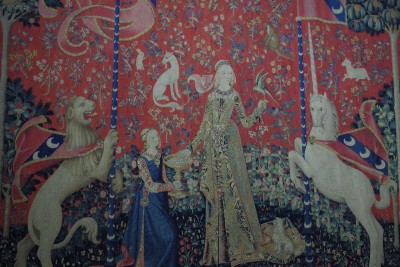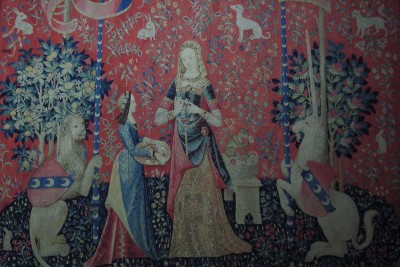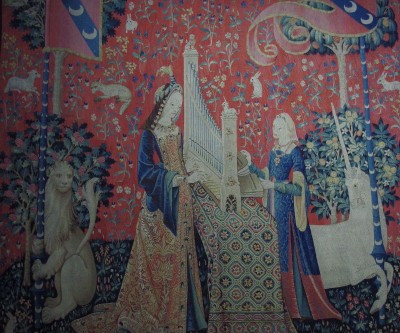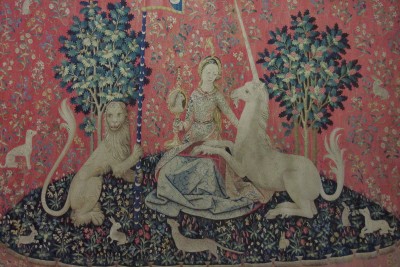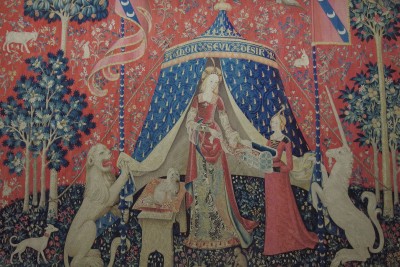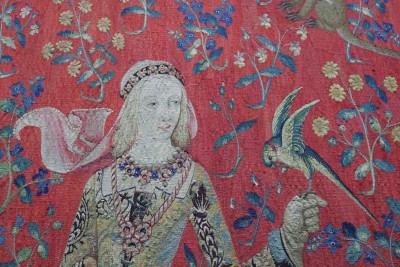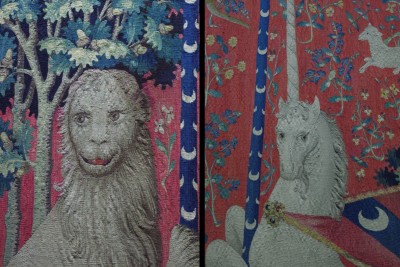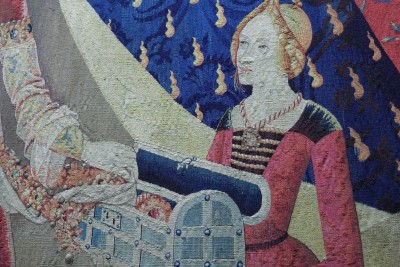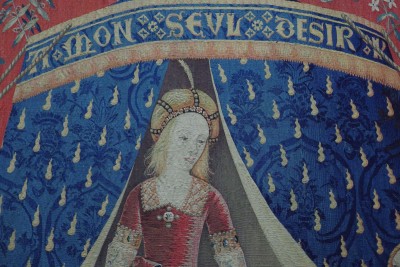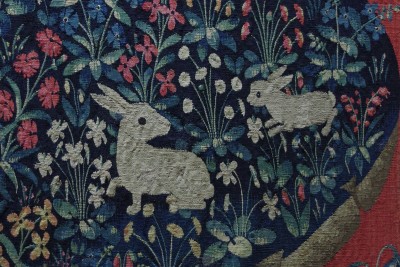Paris: Musée d'art médiéval de Cluny
(vero;2021-Dec-15)
The Museum of Cluny is a museum of medieval arts and crafts housed in the Hôtel de Cluny, a Gothic mansion built in 1485 as the town residence of the abbots of Cluny which incorporated the ancient Roman thermal baths of Lutetia. It was acquired in 1832 by Alexandre du Sommerard, a noted archeologist and art collector to house his ever growing collection of medieval and renaissance art. Upon his death in 1842, the collection was purchased by the French state and the building was opened as a museum in 1843, with Sommerard's son serving as its first curator.
The collection was reorganised in the early 1950s to present a coherent history of medieval civilisation and includes gold- and silver work, stained glass, sculpture, jewellery, textiles, and everyday articles. It is currently closed and undergoing major renovations in order to solve accessibility issues and to make the museum fit for the 21st century. Re-opening is scheduled for Spring 2022. We highly recommend a visit, Cluny is one of our favourite museums in Paris. It is located in the Quartier Latin between Boulevard Saint-Michel and Boulevard Saint-Germain, click here for practical information on (re-)opening times and prices.
And now: Take a walk through the museum and see a selection of works which caught our attention. Or go straight to one of the most famous exhibits of the museum: The Tapestry of the Lady and the Unicorn
Take a walk through the museum
The Tapestry of the Lady and the Unicorn
The Tapestry of the Lady and the Unicorn is a set of six hangings which have been woven in Flanders in the 15th century and have been designed around a representation of the five senses: touch, taste, smell, hearing and sight, plus one: inscribed "my only desire", a motto framed by the initials A and I, maybe referring to the ones of the couple who commissioned the work: Antoine and Jacqueline Le Viste. The beautiful red colour, the luxuriance of their flowery background and a similar composition for each set ensure a sense of peace and harmony. On a large dark-green oval, a lady, elegant, adorned with jewels and often assisted by a noble maiden, stands solemnly between a lion and a unicorn both carrying banners or shields. Each group is framed by trees, the ground on which they stand is planted with flowers, and the red backgrounds are scattered with flowering plants and animals.
What makes this tapestry even more special is the mystery surrounding it. Nobody knows in which sequence it should be shown and the sixth piece's meaning and symbolism is subject to much debate. Two interpretations stick out:
- The first is based on the Platonic conception according to which, in order to reach knowledge, the supreme state of his condition, man has five senses leading to a sixth called the understanding, the intellect. In Plato's view, the five senses are guided by desire, an organising power aimed at seeking the perfectibility of things in order to attain knowledge and truth. Thus, in each of the other tapestries, the senses participate in the acquisition of knowledge.
- The second, which is based on the treaty "Morality of the Heart and the Five Senses" by Jean de Gerson (1402), equates the sixth sense with the heart, being at the top of a hierarchy of senses described in medieval literature, ranging from the most material (touch) to the spiritual. Unlike the other organs, which give rise to a sensitive experience of the external world, the heart is said to be an internal sense that allows one to refocus on the self. The tent could represent this interiority.
If you can read French, we recommend this article from the Connaissance des Arts magazine which gives insight on the symbolism of the various elements of the tapestry. You can also check this automated translation.
Go back to Limoges: The Enamel Collection in the Musée des Beaux-Arts or go on to Rennes: Musée des Beaux-Arts or go up to Museums
$updated from: Museums.htxt Mon 04 Mar 2024 16:04:48 trvl2 (By Vero and Thomas Lauer)$














































